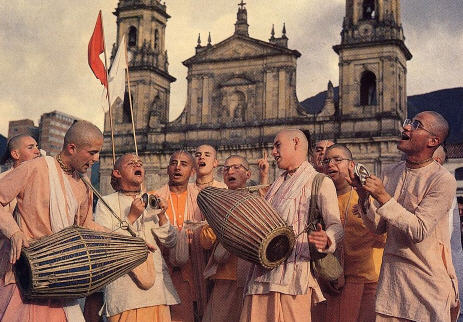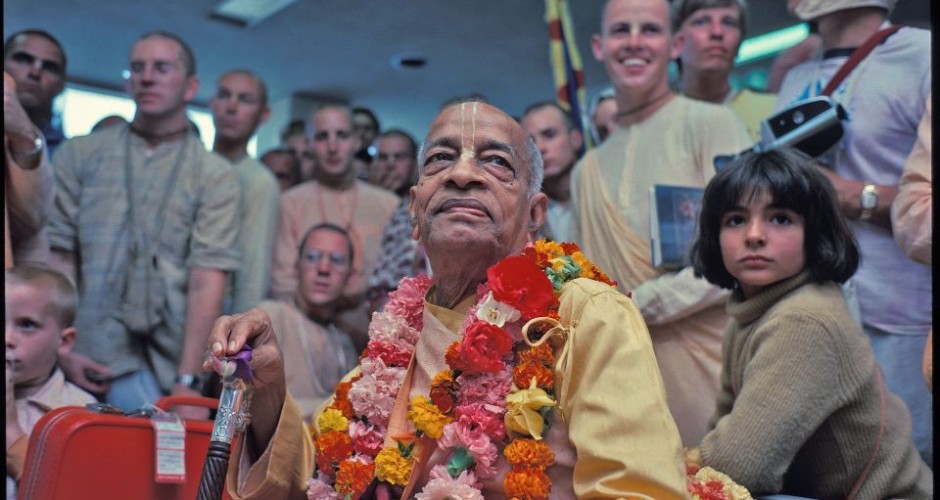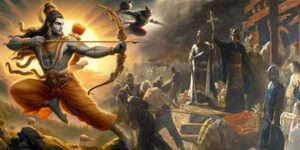ISKCON, or the “Hare Krishna movement”, became a major cultural and religious phenomenon in the 1970s, effectively introducing the Krishna bhakti cult at global level and giving immense popularity to ethical vegetarianism and to the traditional Indian scriptures Bhagavad gita and Bhagavata purana.
However, with the disappearance of Bhaktivedanta Swami Prabhupada, the founder of ISKCON (International Society for Krishna Consciousness) the movement quickly degenerated and became famous for many negative reasons, especially for the children abuse in the Organisation’s Gurukulas, for the violent acts against some of the followers, for covert or overt persecution of dissenters, for the scandalous immoral activities of most of the leaders, for the gross mismanagement of funds and properties, for the extreme internal politicisation, for the cult-like fanatical ideological presentation, and for the bitter controversies between factions.
 A huge majority of ISKCON members left the Organisation in a bitter state of mind – some after a short period, some after a longer period – but usually without understanding what had really gone wrong with their experience. Many of these migrated to Gaudiya math Organisations, some started “parallel” groups for the reform of ISKCON (such as IRM or the Prabhupadanugas etc), some ended up in the “new age spirituality” streams (for example getting into Reiki, “psychological healing” etc), and some simply became negative and resentful.
A huge majority of ISKCON members left the Organisation in a bitter state of mind – some after a short period, some after a longer period – but usually without understanding what had really gone wrong with their experience. Many of these migrated to Gaudiya math Organisations, some started “parallel” groups for the reform of ISKCON (such as IRM or the Prabhupadanugas etc), some ended up in the “new age spirituality” streams (for example getting into Reiki, “psychological healing” etc), and some simply became negative and resentful.
The fortunes of the Organisation slowly declined, to a point where many temples and centers had to be closed or became empty, forcing the managers to hire paid people and/or “import” cheap manpower from India and other “second best” countries by offering support for immigration documents.
 Some ISKCON leaders have therefore changed their clothing into a more “professoral” style and created a good living for themselves with publications, seminars and courses of their own creation, especially with the help and support of the Mother Organisation to which they render an important public relations service. These developments are ideologically very distant from the intentions of the Founder of the Organisation, as they tend to become spiritually cynical and church-like, aimed at just giving a new coat of respectable-looking paint over the serious ideological problems that continue to fester deeper inside, unaddressed and unsolved.
Some ISKCON leaders have therefore changed their clothing into a more “professoral” style and created a good living for themselves with publications, seminars and courses of their own creation, especially with the help and support of the Mother Organisation to which they render an important public relations service. These developments are ideologically very distant from the intentions of the Founder of the Organisation, as they tend to become spiritually cynical and church-like, aimed at just giving a new coat of respectable-looking paint over the serious ideological problems that continue to fester deeper inside, unaddressed and unsolved.Unfortunately, any discussion on these issues is perceived by ISKCON people as “offensive dissent”, “betrayal”, and “heretic rebellion”, and those who dare express anything that is not strictly according to the “Institutional policies” are actively persecuted in various ways, even when they openly dissociate from the Organisation. This persecution also strikes those who do not recognize the Organisation’s “monopoly” over the “trade marks” of Iskcon’s religious business, such as chanting the Hare Krishna mantra, teaching or writing about Bhagavad gita (and other traditional scriptures), opening a Krishna temple, naming one’s vegetarian restaurant “Govinda” or “Hare Krishna restaurant”, etc, even if they never express any criticism or antagonism towards Iskcon.
Those who dare to do so independently from the ISKCON umbrella Organisation or its sub-branches (also controlled by ISKCON) are sued, threatened of personal violence, sabotaged and opposed in all possible ways. So, under all aspects, ISKCON has become another Vatican.
They just glued the faces of Chaitanya and Krishna over the old images of Jesus Christ and the God of the Bible, and adjusted a few details here and there. And this is no wonder, if we go deeper into the study of Iskcon’s true beginnings, in the period under the British rule.
In those times Hinduism at large was systematically attacked as morally and academically unacceptable by the educational system imposed by the British government to those Indians who wanted to keep some prominent position in Indian society (those who later became known as “brown sahibs”). The christian schools in India zealously taught (and still teach) innocent and impressionable children that Hinduism is an ignorant bunch of primitive pagan superstitions and fables, while Christianity is the only acceptable and evolved model of theology, philosophy and ethics.
Even when the students are not forced to official conversion, such approach is terribly damaging and its effects often seep deeply into the subconscious level creating inferiority complexes, fears and other negative ideas, effectively distorting the understanding of Hindu values and robbing them of their actual meaning. This was the target explicitly stated by the educational system established by Macaulay & Co (which in my opinion should be carefully distinguished from English language per se).
 Thus Kedarnath Datta (later known as Bhaktivinode), a very intelligent student in the British educational system, devised a plan to “re-package” Hinduism in a form that would be acceptable and even appreciated by the British academia. In this way, Hinduism could not only survive but regain ground in Bharata and even become appreciated at global level, creating a favourable international public opinion that would also have some influence in checking the cultural destruction perpetrated by the British colonial government in Bharata.
Thus Kedarnath Datta (later known as Bhaktivinode), a very intelligent student in the British educational system, devised a plan to “re-package” Hinduism in a form that would be acceptable and even appreciated by the British academia. In this way, Hinduism could not only survive but regain ground in Bharata and even become appreciated at global level, creating a favourable international public opinion that would also have some influence in checking the cultural destruction perpetrated by the British colonial government in Bharata.
He was not the only one who had such an idea during the same historical period, but while others ventured into advaita philosophy (more fit for intellectuals) or social reformism (more fit for dedicated politicians), he chose the path of Bhakti to appeal to the hearts of the simple-minded masses. Which, in my opinion, was a great idea. Thus he proceeded to construct a sort of “Hindu Christianity”, presenting Chaitanya as the counterpart of the Jesus figure, and Krishna as the counterpart of the idea of the (Father) God in Christianity.
It was a very easy job, because already many groups in Bengal (the second family home of Kedarnath Datta, while his original village was in Orissa) worshiped Chaitanya as an avatar of Krsna and in fact not different from Krsna himself, after the scholarly descriptions of Chaitanya Caritamrta (written by Krsnadas Kaviraj, a later disciple of Rupa and Raghunath, two direct followers of Chaitanya). Krsnadasa Kaviraja could then be considered a sort of “later evangelist” of Chaitanya much like Mark and Luke in Christianity.
The Gaudiya math even openly used (and still uses) many Christian expressions, such as the “gospel” of Chaitanya and put a strong emphasis on the fact that Chaitanya tanya made no caste or religion discrimination among his followers, focused entirely on aikantika bhakti to a Supreme Dominating Male, etc.
 However, it is extremely important to notice that neither Krishnadasa Kaviraja nor Bhaktivinoda or his son and successor Bhaktisiddhanta or his disciple Bhaktivedanta (the founder of ISKCON in USA) ever expressed, taught or intended to support the church-like offensive, denigratory or aggressive opinions, unethical policies and hypocritical stands that ISKCON unfortunately developed since the disappearance of its founder, Bhaktivedanta Swami.
However, it is extremely important to notice that neither Krishnadasa Kaviraja nor Bhaktivinoda or his son and successor Bhaktisiddhanta or his disciple Bhaktivedanta (the founder of ISKCON in USA) ever expressed, taught or intended to support the church-like offensive, denigratory or aggressive opinions, unethical policies and hypocritical stands that ISKCON unfortunately developed since the disappearance of its founder, Bhaktivedanta Swami.
That would be the handiwork of a person who could be considered somewhat like the counterpart of Paul in Christianity: Tamal Krsna, who was also the mastermind of the unauthorised changes in the books and teachings of Bhaktivedanta Swami to suit his political purposes.
It is extremely important to understand that Bhaktivedanta Swami, Bhaktisiddhanta and Bhaktivinoda never wanted to create an “ISKCON cult” where the Institution existed only to support its own existence and attacked all others, especially genuine Hinduism.
Agreed, some unfortunate expressions were used (“demigods”, etc) but that was according to the specific strategy of propitiating Christians, and largely because of a limited knowledge of the English language and western culture (filtered through the Indian educational system). But all the three of them saw that particular “abrahamic” presentation of Vaishnavism as a specific strategy required by desa, kala, patra (place, time and audience), to create a strong first footing from which they would continue to expand the genuine teaching of sanatana dharma.
We can find this idea expressed very clearly in the famous Bhagavata lecture given by Bhaktivinoda in 1869, in many passages written by Bhaktisiddhanta (who had also established a large library with many “dharma shastras”) and in many conversations and lectures by Bhaktivedanta. All three of them often quoted the famous verse written by Rupa Gosvami in his Bhakti rasamrta sindhu (1.2.101): sruti smrti puranadi pancaratra vidhim vina, aikantiki harer bhaktir utpatayaiva kalpate.
Now, it was left to the sincerity and punya of each student to find out what sruti and smrti contained and taught to avoid becoming followers of ”a useless fantasy that could only cause disturbance and damage to society”, and learning Sanskrit was an important part of the process. Precisely for that reason, Bhaktivedanta’s translations and commentaries included the original devanagari text, transliteration, word-to-word translation and literary translation, and all disciples were required to chant slokas and mantras in Sanskrit rather than in a “local vernacular” version.
However, it is a fact that the particular flavor and emphasis of their preaching was due to the urgent need to preach to Christians and to those people who had been heavily influenced by Christian indoctrination (including Indians), and especially in a very peculiar historical period when India was under the British Christian domination.
 Even Bhaktivedanta preached in a historical time (the late 1960s and 70s) when the Hindu movement was still very much still sleeping and Hindus in USA were mostly hiding like “Jews under the Nazi regime” or even distancing themselves from traditional “orthodox” Hinduism.
Even Bhaktivedanta preached in a historical time (the late 1960s and 70s) when the Hindu movement was still very much still sleeping and Hindus in USA were mostly hiding like “Jews under the Nazi regime” or even distancing themselves from traditional “orthodox” Hinduism.
Kedarnath Datta, who had named his children Vimala Prasad and Biraja Prasad, could not elaborate much on Shiva tattva or Shakti tattva as they were impossible to reconcile with the Victorian Christianity.
Similarly, Bhaktivedanta also gave his disciples many names as “Umapati das” and “Mahamaya devi dasi”, even while remaining focused on a “monotheistic” Krsna worship in his preaching in the West. Bhaktivedanta had tried to develop Iskcon in Jhansi, India, before deciding to move to US, and had met with almost total lack of interest.
After about one year uselessly spent in trying to approach scholars and “respectable people” in US, Bhaktivedanta Swami saw the opportunity to preach to hippies and rebellious baby-boomers of an American generation that was definitely ready for a “change of consciousness” and for renunciation to the previous culture and mentality. As much as they were able to, that is. In fact the problem in “expanding the area of consciousness” is always with the subconscious beliefs that people are not recognising at the conscious level. Unqualified people may unwittingly stick a new label over an old mind pattern and delude themselves into believing that they are following a new set of mind patterns just because the label/name has changed.
Unfortunately, the process of confusion was compounded by the improper and non-authorised contact that some immature disciples of Bhaktivedanta Swami had with similarly unqualified disciples of Bhaktisiddhanta (shrapnel from the disintegration of the Gaudiya math on the disappearance of Bhaktisiddhanta) and from which they got several damaging ideas on “the genuine Indian/Vedic culture” such as birth (race and gender) prejudice, acceptance of unqualified authorities out of political/social motives, rationalisation of mistreatment of women, artificial sannyasa in pursuance of social fame power and profit, etc.
At this particular time in history, when we have already entered the 2010s, we need to realise that the situation has changed considerably, and that we also need to correct our course accordingly.
Today we do not need to appease and accommodate the abrahamic tendencies of our audience as there are no more British colonisers and we do not need the validation of mainstream academia any more. On the contrary, there are growing numbers of people who do not identify themselves as Christians any more, and in fact have rejected the Christian paradigms – for example the neo-pagans, wicca and new age people – due to several factors. Besides, today the Hindu movement is well on its way, although much work remains to be done, and this is probably the single greatest historical fact that we need to focus on.
This is the time to go back to the source, to wash away the unnecessary superimpositions and rediscover the original teachings. For ISKCON and Gaudiya matha followers this means to rediscover a real Chaitanya who simply left a Sikshastaka (stating that “there are no hard and fast rules or ideology to be followed, just the loving chanting of the many Divine Names”), who honored the Oriya Vaisnavas (tantrics and yogis and not merely bhaktas), and a real Rupa Gosvami who worshiped a Deity of Durga.
It is time they rediscovered the truth about people like Jahnava Mata and read Chaitanya bhagavata (a more direct biography of Chaitanya written by a contemporary follower) for a change. In Chaitanya bhagavata, for example, there is a lengthy description of how Chaitanya exhibited the sentiments of Durga in the house of his main follower Advaita Acarya, and how Caitanya and his closest followers fell into a deep spiritual ecstasy by paying homage to Lingaraj in Bhubaneswar and a long line of other Shiva temples before arriving in Puri. The declared purpose of the sankirtana movement is to encourage the masses of people to appreciate and glorify God, and become God conscious as per the instructions of Gita and Bhagavatam.
Only, we should not forget that without the support of dharma – starting with truthfulness – and without the proper knowledge, there is no possibility of genuine spiritual or religious realisation. Let the future development take us to the proper direction.






























